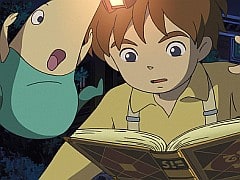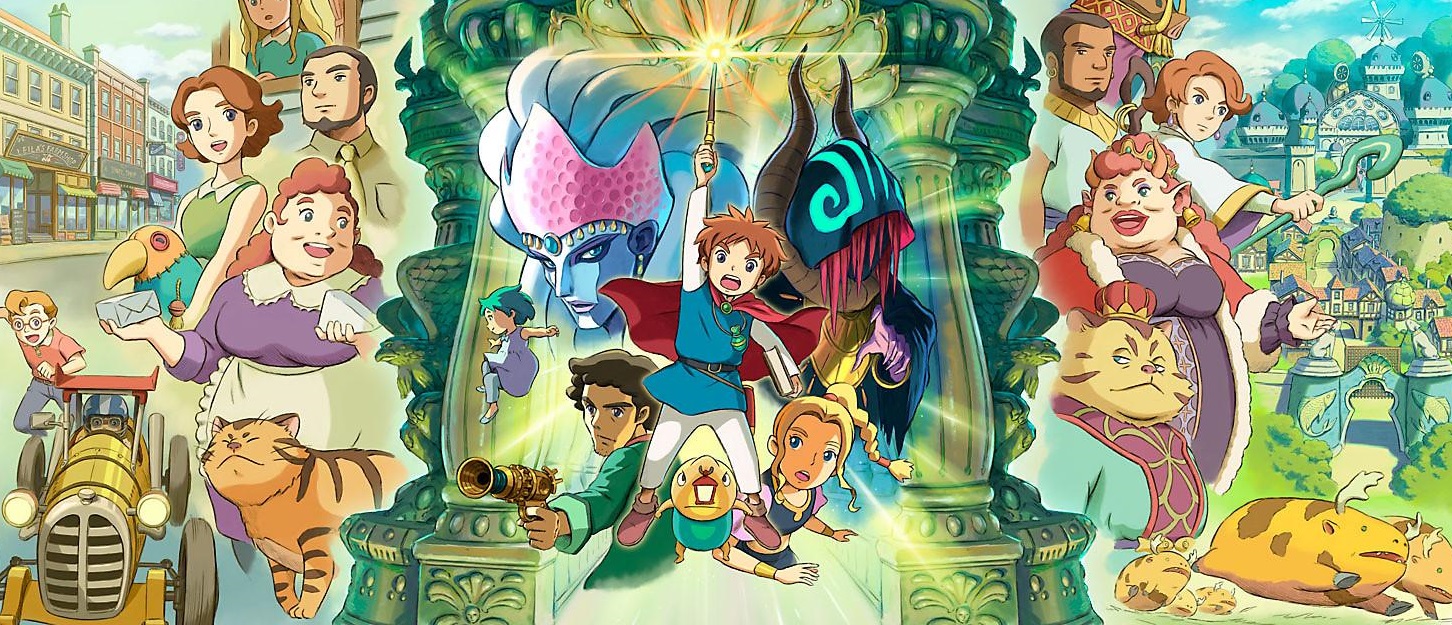You can trust VideoGamer. Our team of gaming experts spend hours testing and reviewing the latest games, to ensure you're reading the most comprehensive guide possible. Rest assured, all imagery and advice is unique and original. Check out how we test and review games here
RPGs rarely fare well when it comes to demos. This is a genre where mechanics, character and plot development can and will take their sweet time, building momentum and relevance over the course of dozens of hours. The idea that a 10 minute morsel can somehow be representative of the full experience… well, it’s frankly preposterous.
After its first showing at Namco’s Global Gamers Day, Ni no Kuni is no exception to this rule. But by golly, it looks gorgeous.
Perhaps we should expect nothing less from Studio Ghibli’s first sortie into games development, working in conjunction with Level 5, but even so, the cel-shaded cast are strikingly beautiful. Even when you’re simply traversing the overworld there’s an abundance of charm: anime monsters patrol the landscape, and if you get too near a Metal Gear-style exclamation mark appears over their heads, at which point they give chase with angry-but-cute little faces. Elsewhere, a sailboat bobs lazily in a small bay, flanked by rocky outcrops. Climb aboard and you can set out to sea, cutting through the rippling waves. We’ve done this sort of thing hundreds of times before, but the art style immediately fills the world with a fresh sense of magic.
Magic, naturally enough, is a big part of Ni no Kuni’s plot, or so it appears from the few details that have been revealed thus far. A young boy named Oliver is given a hand-stitched toy by his mother, who subsequently dies. As Oliver weeps onto the doll – a plump, bird-like creature called Drippy – it springs to life, and soon the pair embark on a quest that could possibly result in his ma’s return… and hopefully not in an Evil Dead-like fashion.
Further plot details will have to wait, but on visual terms alone there’s already evidence that Ni no Kuni will compare favourably to Ghibli’s past output. Namco’s slender demo finds Oliver and his friends visiting Hamelin – a typical JRPG steampunk town, given a fresh twist: the machine-obsessed locals are anthropomorphic pigs. Hamelin itself hides under a giant roof, designed to protect the golden machinery that keep everything ticking.
As Oliver and his chums set out in search of Hamelin’s prince they find that the city is capable of mechanically transforming, a trick that places them right in the path of an Imperial procession that threatens to crush them. As this happens the game undergoes a similar metamorphosis, switching back and forth between gameplay, in-engine cutscenes, and clips animated by Studio Ghibli. And in a distinctly promising sign, the transitions between these mediums are barely noticeable.
Something is clearly rotten in the state of Hamelin, and it’s not long before Oliver ends up in an unexpected boss fight. The antagonist here is a hefty tank with porcine design (the turret looks like an elongated pig snout) dubbed “Porco Grosso”, a handle that gives a nod-and-wink to Porco Rosso, the 1992 Ghibli film of the same name. There’s little time for nostalgia, however, as Ni no Kuni reveals an unexpectedly complex combat system.
In simple terms, Ni no Kuni has an active time battle-like setup, whereby each member of your party has a time bar that must fill up before they can act. Players can only direct one character at a time, and in the meantime the others will act automatically. You can change the default behaviour of your allies, even in the middle of a fight – instructing them to act as healers, to provide support, or even to do nothing (which then allows you to switch character and direct them personally).
There’s a simple menu system for dishing out orders, presented in the form of speech bubbles that spring from a portrait of your current character. It’s a nice, simple piece of design, but one that contrasts with the vast spread of tactical options available. Along with basic attacks and item use, each party member has a specific class ability: Oliver can cast spells, his blonde chum Esther can sing songs, and there’s a trampy-looking fellow named Swaine who can perform tricks with his guns – “Mugshot” deals damage and pilfers items from foes at the same time.
It doesn’t end there either, because each party member can also summon a number of helper creatures to the battle, who then fight under their own will (Drippy the former toy is one of these familiars, though he’s also a key character within the plot). There’s a Pokémon-like vibe here, especially as each monster is tied to an element that affects the kind of damage they inflict. In the aforementioned pig-tank battle, the key seemed to lie with using lightning-based moves to stun the vehicle, allowing everyone else to give it a good old cartoon kicking.
In any other game the Pokémon similarities might be cause for mild concern, but here the menagerie of familiars plays into Ghibli’s endlessly creative character design, dispelling any sense that we’re retreading familiar ground. And really, that says a lot about Ni no Kuni as a whole. It looks so good, you feel you’d be prepared to forgive it just about anything. Happily, though, the first signs suggest that forgiveness won’t be needed. Even in the space of 10 minutes, Ni no Kuni leaves you wondering what else Level 5 might have in store.
Ni no Kuni will be released Q1 2013 on PlayStation 3.
Ni no Kuni: Wrath of the White Witch
- Platform(s): Nintendo DS, Nintendo Switch, PC, PlayStation 3, PlayStation 4
- Genre(s): Family, Fantasy, JRPG, RPG

/https://oimg.videogamer.com/images/08ae/ni_no_kuni_4.jpg)






